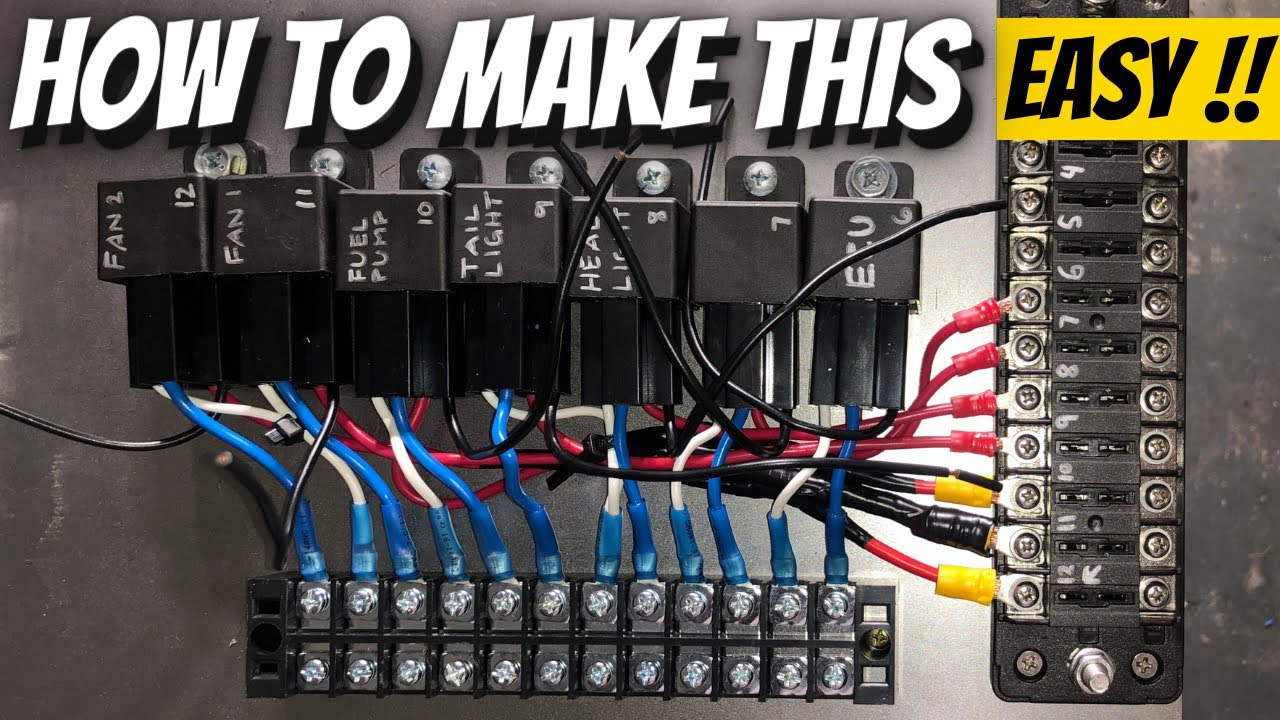Custom relays and fuse boxes are often installed in a vehicle to reinforce the electrical system or modify certain features in a car. Since cars nowadays have advanced features and functions that keep up with modern technology, better safety devices are installed within a vehicle to avoid the risk of overloading the electrical system.
To understand how this works with Custom relays and fuse boxes, we must first define a fuse and a relay. These components protect the entire electrical system by controlling or stopping excessive current from passing through.
Relays Defined
The relays in an electrical system act as the gatekeepers for the flow of electrical current passing through each circuit. If you’re planning to repair or assemble a custom relay panel, it’s better to acquire knowledge about different types of relays and how they function.
The simplest and most common type of relay is one that operates electromechanically. Knowing the different parts that make up an electromechanical relay can help you further understand how it works. The four main parts of a relay are as follows:
- Frame: The frame is what holds everything together. It houses all the parts and protects them from external elements.
- Electrical Contacts: The electrical contacts in a custom relay always come in pairs. One is stationary, while the other is movable. If the connections are touching each other, electricity can flow through the circuit to energize the system. If the contacts are separated, the electrical flow will break, thus switching the entire system off.
- Armature: The armature is responsible for pulling or separating the contacts by prying the movable one away. If the system switches off, a spring allows the armature to return to its original resting position.
- Coil: The coil in a custom relay is wrapped around a metal core. When the system switches on, the ring emits electromagnetic energy that causes the armature to move and touch one another.
Fuses Defined
Now that we’ve covered the importance and functions of a relay, it’s also essential to learn about what fuses do for the electrical system in a vehicle. Like relays, fuses provide reinforcement by stopping the excessive current flow within a custom relay or fuse box.
It is considered a safety component that is not only used in the automotive industry but also in other sectors that require electrical operations. Fuses come in many shapes and sizes, depending on the application. They are as follows:
- Lucas Fuse: These are types of fuses that are typically installed in older British cars. They are either made out of metal or ceramic material.
- Glass Tube Fuse: A glass tube fuse is shared outside the automotive industry. Before blade or spade fuses were adapted into custom relay panels and fuse boxes, glass tube fuses were the ones that were often used.
- Blade or Spade Fuses: Considered the most common choice for automotive applications, blade or spade fuses are usually made with prongs that go into sockets.
- Limiter Fuses: Current limiting or limiter fuses have a distinct element that melts when a certain threshold is reached. This then stops the excessive currents from passing through.
- Bosch Fuses: These are types of fuses that were made for older European cars. A custom relay or fuse box that requires a Bosch fuse is often labeled to indicate its limit and is generally made from either plastic or ceramic material.



